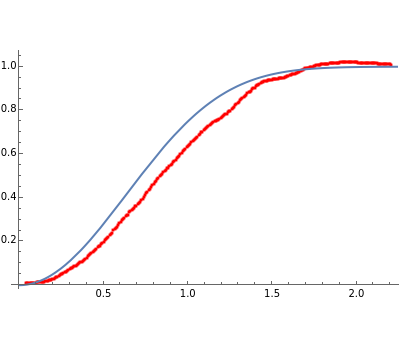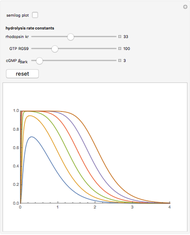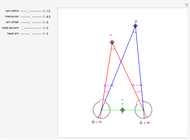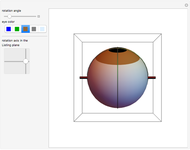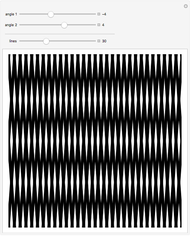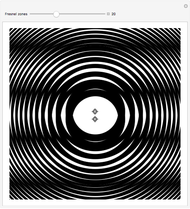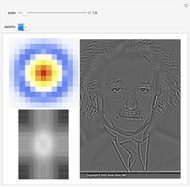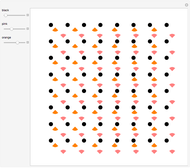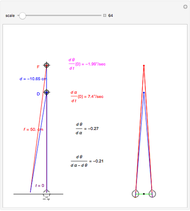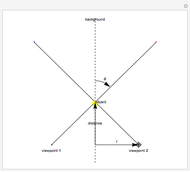Single Photon Response for Rods in a Toad's Eye

Requires a Wolfram Notebook System
Interact on desktop, mobile and cloud with the free Wolfram Player or other Wolfram Language products.
This Demonstration treats the single photon response of a rod in a toad's eye. First, choose the dark cyclic guanosine monophosphate (cGMP) concentration with the first slider. Then choose the volume of the compartment with the second slider to best fit the experimental data. The red dots give some experimental data. Note how sensitive the fit is to the volume of the compartment.
Contributed by: Jean-Pierre Raynauld (November 2011)
Open content licensed under CC BY-NC-SA
Snapshots
Details
Differences in sensitivity and adaptive behavior of rods and cones are intimately related to the ultrastructure of their outer segments, developed as a model of vertebrate phototransduction; see [1]. For the kinetics of the rising portion of the response following the capture of a single photon, see [2]. The number of excited phosphodiesterase (PDE) molecules, whose role is to hydrolyse cyclic guanosin monophosphate (cGMP), increases linearly in time. This number is converted into molar concentration. The differential equations describing the process are
 ,
,
 .
.
The final plotted result is
 .
.
The values of PDErate (125/sec.), turnover (2200/sec.), Km (10 μM), and cGMP[0] (adjustable 1–10 μM) are obtained from the literature [2, 3]. Toad rod outer segment effective cytoplasmic volume is 0.706 pl. Experimental data was digitized from Fig. 5 in [2].
References
[1] J. P. Raynauld, "A Compartment Model for Vertebrate Phototransduction Predicts Sensitivity and Adaptation," Neurobiology: Ionic Channels, Neuron and the Brain (V. Torre and F. Conti, eds.), New York: Plenum Press, 1996.
[2] T. D. Lamb and E. N. Pugh, "Phototransduction, Dark Adaptation, and Rhodopsin Regeneration," Investigative Ophthalmology & Visual Science, 47(12), 2006 pp. 5138–5152.
[3] I. B. Leskov, V. A. Klenchin, J. W. Handy, G. G. Whitlock, V. I. Govardovskii, M. D. Bownds, T. D. Lamb, E. N. Pugh, and V. Y. Arshavsky, "The Gain of Rod Phototransduction: Reconciliation of Biochemical and Electrophysiological Measurements," Neuron, 27(3), 2000 pp. 525–537.
Permanent Citation
